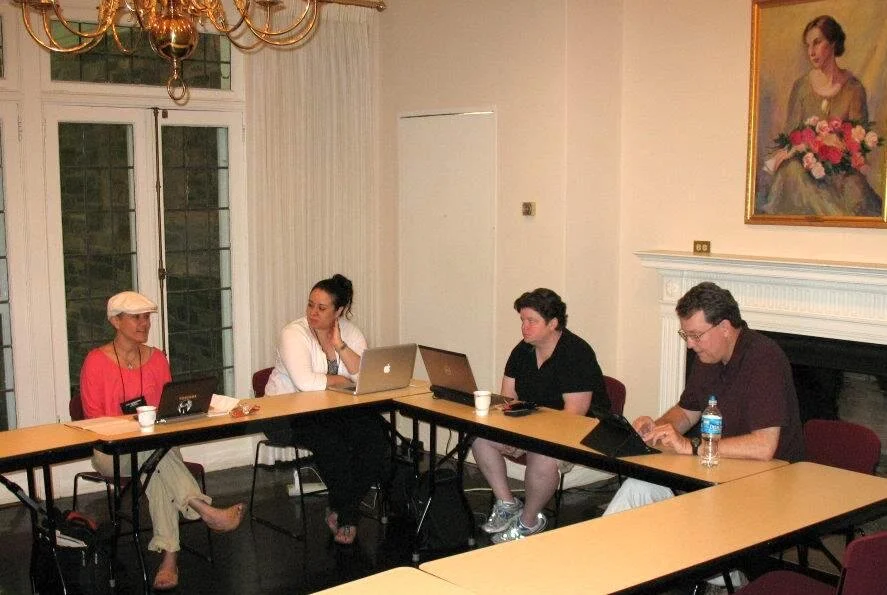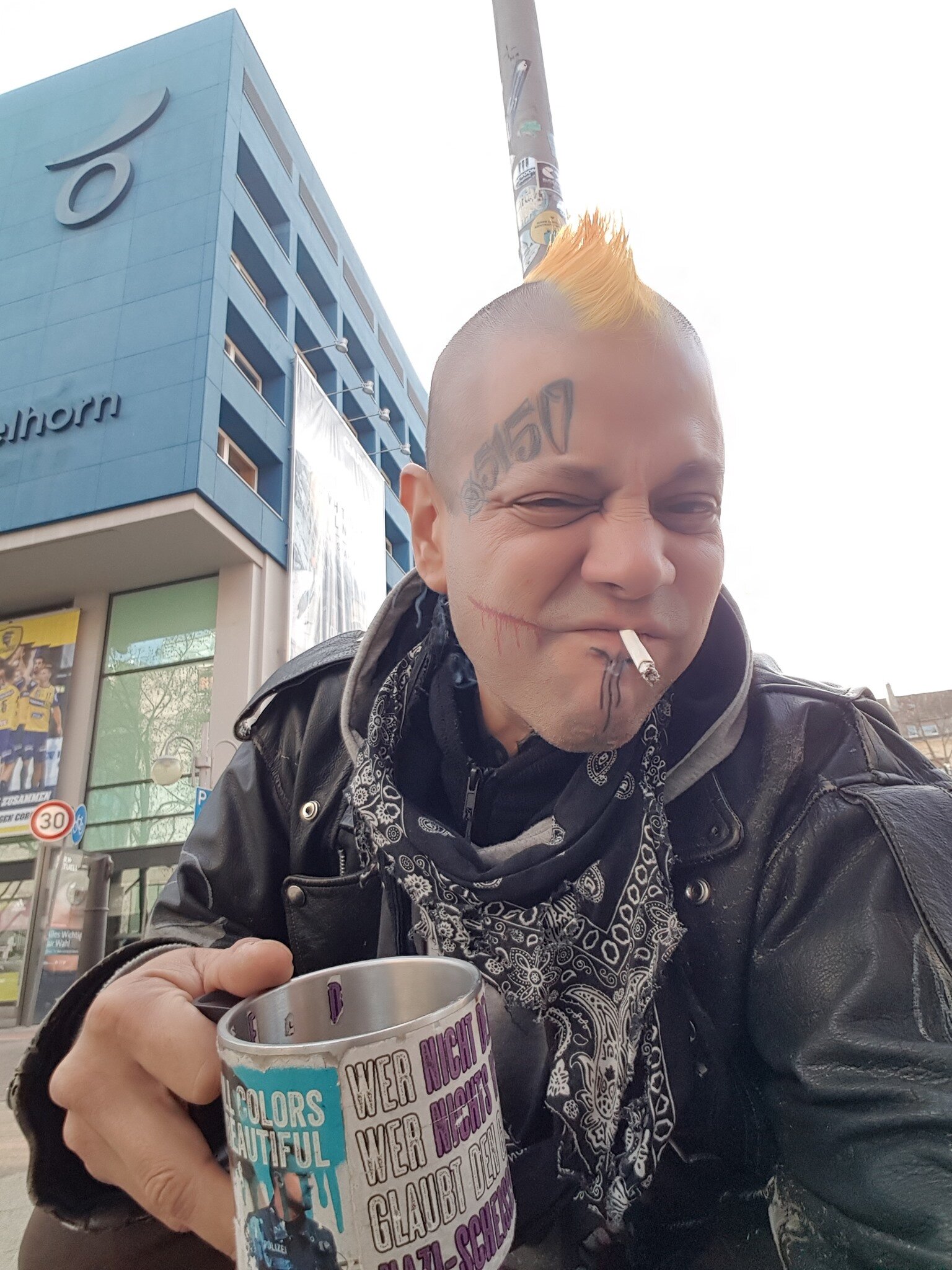Academentia
Dr. Xochitl Alvizo reclaims her intellectual faculties from academia through HTI
“Metamorphose” bronze sculpture by Maria-Luise Bodirsky, inspired by artworks of early history, including Egyptian high culture, Greek mythology, and the Old Testament. Source: PNGfind
From 2012 to 2021: In honor of HTI’s Silver Anniversary, Dr. Xochitl Alvizo offers a follow-up to “Being Renewed at the Hispanic Theological Initiative,” a blog post she published nine years ago in Feminism and Religion (FAR), 20 August 2012. Co-founded by Dr. Alvizo in 2011, FAR is an all-volunteer collaborative project among a diverse community of thinkers, writers, activists who are working to further feminist dialogue while nurturing one another’s work, even across differences.
Academentia fragmented my very being.
Academentia and its distortion during my doctoral studies—my deterioration or deformation, if you will—alienated me from myself, and my intervention was the Hispanic Theological Initiative (HTI).
In Websters' First New Intergalactic Wickedary of the English Language (Beacon Press, 1987), “academentia” is the word radical feminist and theologian Mary Daly and her friend Diana Beguine came up with to reference the academy’s impact of inducing “irreversible deterioration of faculties of intellectuals.”
In After Whiteness: An Education in Belonging (Eerdmans, 2020), theologian Willie James Jennings similarly writes about the distortion of formation that centers “white self-sufficient masculinity” as the end goal of theological education (and that also applies to Western education writ large). Jennings explains it as “a way of organizing life with ideas and forming a persona that distorts identity and strangles the possibilities of dense life together.”
Recently, I received an end-of-semester thank-you email from a student: “I completed all of my education here in L.A. and it's incredible that even here in Los Angeles, which is considerably more diverse than other parts of our country, you are only the second Latinx womxn who I have had as a professor, and it makes a difference.”
According to the U.S. Census, 50 percent of the population in L.A. County identifies as Hispanic or Latino, and, according to the University of Pennsylvania, Latinos make up “20 percent of the population aged 18-44,” but “only 4.1 percent of the professoriate in the United States.”
It is therefore unsurprising that I was only the second Latinx professor in the entire educational experience of a student in a city with a general population that is 50 percent Latinx.
Xochitl Alvizo (far left) and other HTI Dissertation Scholars at the “Writing your Dissertation” Workshop, Princeton Theological Seminary, Princeton, NJ, June 2012. Photo courtesy of HTI
Reclaiming sanity
My student was right about Latinx faculty representation: “it makes a difference.”
I first felt (and wrote about) this difference back in 2012, after attending my first HTI gathering. For the first time, I found myself in a room full of other Latinx scholars and experienced the magic of being able to claim the label. Even in my fifth year of doctoral work, I had not yet—up until that moment, in that space—been able to see that I was already a scholar. Having myself, my culture, my languages reflected back to me by other Latinx scholars allowed me to not only claim myself as a full-fledged member of the academy but also to realize that my formation as a scholar had thus far alienated me from my Latinx identity. Having HTI embody, affirm, celebrate, and value the Mexican-American aspect of my identity made all the difference in my being able to enter the academy with more of Xochitl (also the Nahuatl word for “flower”) intact, which then makes a difference to my students.
My student, who teaches at a community college in the Los Angeles area while working on a master’s degree in Humanities, wrote: “it has been liberating and affirming to see you teach in your own style and that you bring your lived experiences in what you choose to teach and in the manner which you teach [it].” Her note mentions that, in navigating academia—in the classroom and at conferences—she “became very accustomed to being one of few and sometimes the only womxn of color in the room”—a common experience for many, if not most, Latinx scholars.
What we increasingly know is that theirs is not a benign experience. It is part of the distortion of the academy that has its roots, like many things in this country, in an image and vision of a “white self-sufficient man” with the values of “possession, control, and mastery,” according to Jennings. It is understandable, then, how much alienation this causes in many as we try to find our way and place in our respective institutions.
The academy and the communities within which we teach, learn, and minister need more than homogeneity. HTI reminds us that there are other visions and values we can bring to the institutions in which we choose to be participants. We need not only be at the mercy of a given institution’s default formation; we can bring our own cultural values, ideas, and frameworks that, à la Jennings, make possible that which hegemony and homogeneity strangles: “the possibilities of dense life together.”
If we are to have a richer and more dense life together, bringing the fullness of ourselves is what we must do.
Photos: Lou Alvizo
Opening the front door
So what might bringing the fullness of ourselves look like in the classroom?
After all, there is often a distance professors are expected to keep from our students, a formality that must be maintained in order to honor the very real power differential that exists between student and professor. While I acknowledge this reality, I also know that it is not the only one at play.
Every semester, for example, I introduce my brother Lou to my students as a way to invite them to “Open The Front Door,” which is a mnemonic device to help them remember to Observe, Think, Feel, and Desire as they engage new ideas and theories. Lou is a self-identified gutter punk; he is someone you might run across sitting on the curb of a busy city street, welcoming you to give up your spare change. He wears his hair in colorful mohawks and dons tattoos all over his face and neck— unconventional by all standards and not someone to whom people would necessarily want to open their front door. But I tell my students that Lou is also one of the most free and joyful people I know. And when my mom and I visited him in Germany, where he lives with his wife (also a gutter punk), and we walked with them through the city, friends of all kinds would greet him, excited to get to meet us, as they already knew about our upcoming visit. Sharing information about my brother is just one of the ways I invite students to consider the marginal spaces into which our course material might take us and to stay open to discovery, even when it ends up feeling a little intimidating to “open the front door.”
Along with letting them know a little more about my world by introducing them to my brother, I am often inviting my students to put their “researcher hat on,” or I’ll say, “Now, let’s put our sociologist of religion hat on.” I do this to invite them into a different kind of presence and role in the classroom; to affirm the fact that we all have the possibility to participate as teachers, learners, and researchers, and to empower students’ own capacity for knowledge production.
But it takes work to swim against the dominant current. We need a community of support aligned in the struggle to help us stay nourished and grounded, to be that place where, together, we practice a different formation: a belonging that does not aim to de/form you into a singular vision.
Compos mentis
Nine years after my first encounter with HTI, I get to be my own unique embodiment of a scholar and educator.
I am an assistant professor at California State University, Northridge (CSUN), a Hispanic-Serving Institution (HSI) in Los Angeles. At CSUN, I have participated as a mentor in its HSI Pathways to the Professoriate (now completed), a program funded by the Andrew W. Mellon Foundation that helps diversify the humanities professoriate by supporting undergraduate students from HSIs applying to doctoral programs.
I have had the privilege of leading multiple dissertation-writing retreats for doctoral students of color at my alma mater Boston University School of Theology, where I share what I learned from HTI’s Professional Development Conference with doctoral students who are in their own throes of academentia.
To this day, I continue to benefit from the energy and inspiration that HTI gatherings are well known for. My participation includes serving as faculty and curriculum-review committee member of HTI’s Professional Development Conference—the very gathering that had helped me return to myself when I was a doctoral student.
This web of giving and receiving, sharing and regrouping, is part of the intervention HTI provided me. It reflects the en conjunto way, a daily-life approach that recognizes our interdependence and calls us to show up strong for one another and for ourselves in any of the infinite ways that is possible in a given moment.
This year, HTI celebrates its silver anniversary, its 25th year of paving a new way for Latinx scholars and leaders within and beyond this institution—a reach not forecasted in the original formation of the academy. A quarter century of facilitating belonging, of forming partnership and collaboration across institutions nationwide. We are all the better for it. As HTI celebrates us into a different formation, let’s continue to imagine even newer ways of coming together in the academy, into communion, en conjunto.







